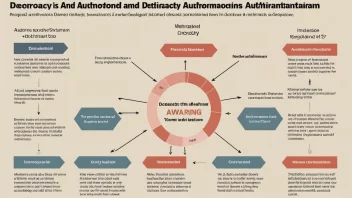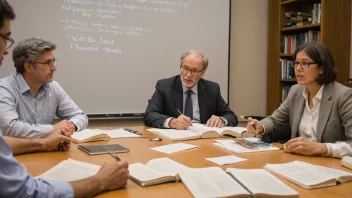Introduction
In this article, you will learn how education significantly impacts economic development. We will explore the relationship between educational attainment and economic growth, examine key factors that contribute to this relationship, and provide a step-by-step guide on how to leverage education for economic advancement. Whether you are an educator, policymaker, or simply interested in the topic, this guide will offer valuable insights.
Step 1: Understand the Basics of Economic Development
Before diving into the relationship between education and economic development, it's essential to grasp what economic development entails. Economic development refers to the process by which a nation improves the economic, political, and social well-being of its people. Key indicators include:
- Gross Domestic Product (GDP)
- Employment rates
- Income levels
- Quality of life
Step 2: Recognize the Role of Education
Education plays a crucial role in economic development. It equips individuals with the skills and knowledge necessary to participate in the workforce effectively. Here are some ways education contributes to economic growth:
- Skill Development: Higher education levels lead to a more skilled workforce.
- Innovation: Educated individuals are more likely to innovate and create new technologies.
- Higher Earnings: Education generally correlates with higher income, which boosts consumer spending.
Step 3: Identify Key Research Trends
To understand the current landscape, it's essential to identify key research trends in the relationship between education and economic development. Some notable trends include:
- STEM Education: A focus on science, technology, engineering, and mathematics (STEM) education to drive innovation.
- Access and Equity: Research highlighting the importance of equitable access to education for all demographics.
- Adult Education: The growing significance of lifelong learning and adult education programs in adapting to changing job markets.
Step 4: Explore Successful Case Studies
Examining successful case studies can provide practical insights. Here are a few examples:
- Finland: Renowned for its education system, Finland has one of the highest literacy rates and a strong economy.
- Singapore: Investments in education have led to rapid economic growth and a highly skilled workforce.
- Germany: The dual education system combines apprenticeships with classroom learning, fostering a skilled labor force.
Step 5: Implement Educational Policies
To leverage education for economic development, policymakers should consider the following strategies:
- Invest in Early Childhood Education: Quality early education lays the foundation for lifelong learning.
- Promote Vocational Training: Programs that prepare students for specific trades can meet labor market needs.
- Encourage Higher Education: Scholarships and financial aid can increase college enrollment rates.
Step 6: Foster Public-Private Partnerships
Collaboration between the public and private sectors can enhance educational outcomes. Here’s how:
- Workforce Development Programs: Businesses can partner with educational institutions to create programs that meet their needs.
- Internships and Apprenticeships: Offering students real-world experience can improve job readiness.
- Funding and Resources: Private companies can provide funding for educational initiatives and resources.
Step 7: Measure Outcomes and Adjust Strategies
Finally, it’s crucial to measure the outcomes of educational initiatives and adjust strategies accordingly. Consider the following:
- Data Collection: Gather data on educational attainment and economic indicators.
- Evaluate Programs: Assess the effectiveness of educational programs in boosting economic development.
- Continuous Improvement: Use findings to refine policies and educational practices.
Conclusion
In summary, education is a powerful driver of economic development. By understanding the relationship between the two, recognizing research trends, exploring successful case studies, implementing effective policies, fostering partnerships, and measuring outcomes, we can create a more prosperous society. Remember, investing in education is investing in our future.






